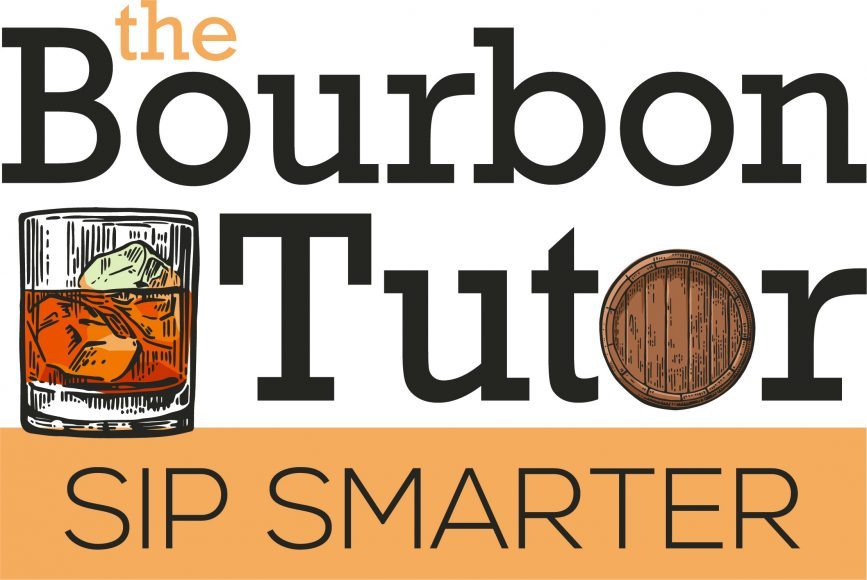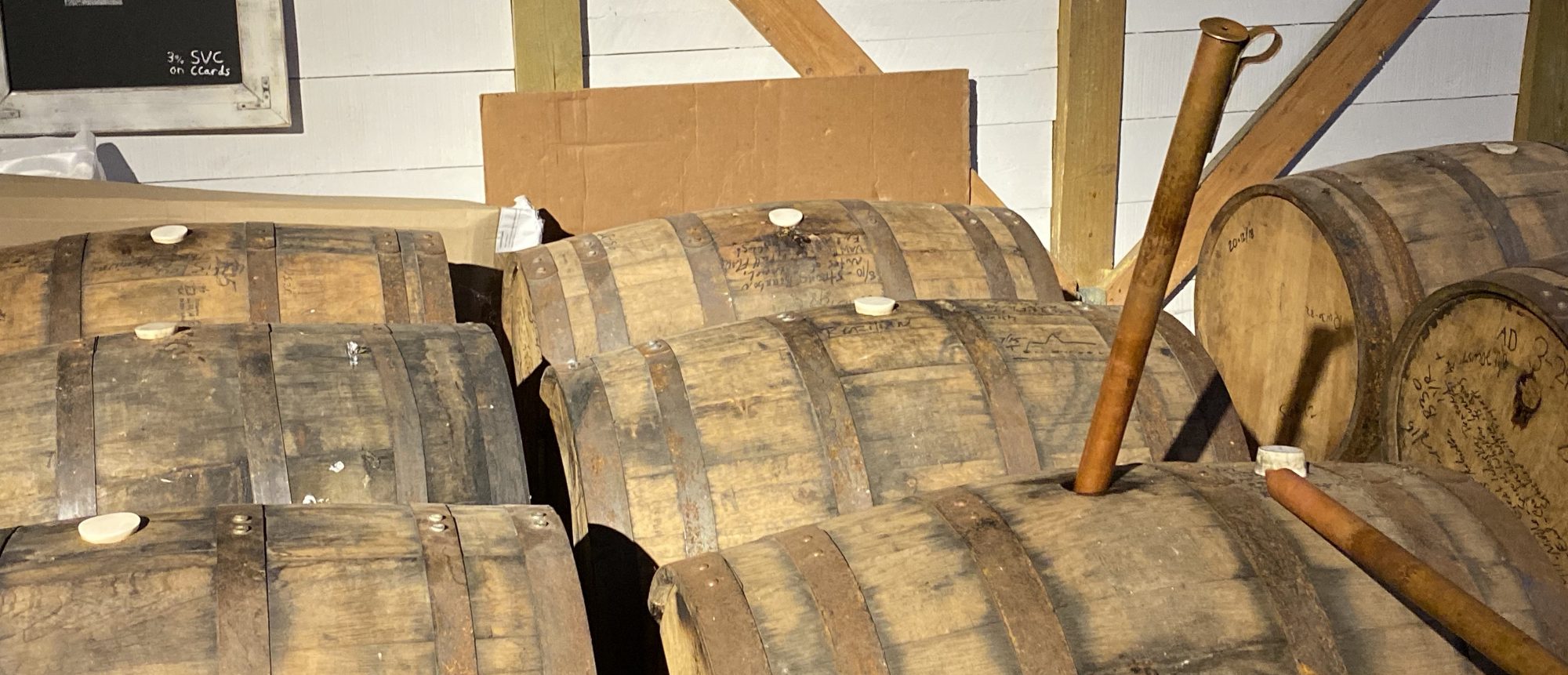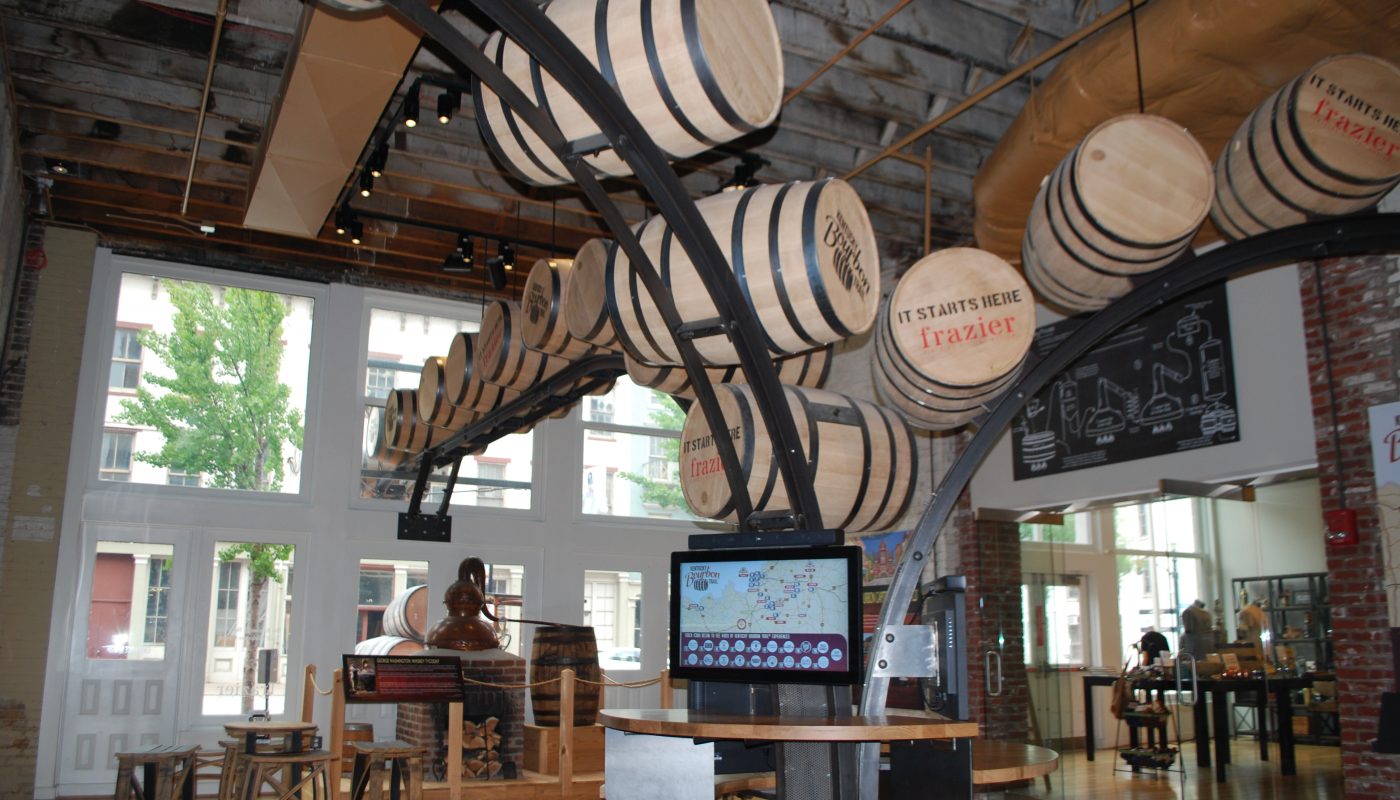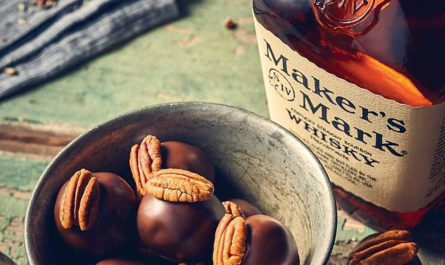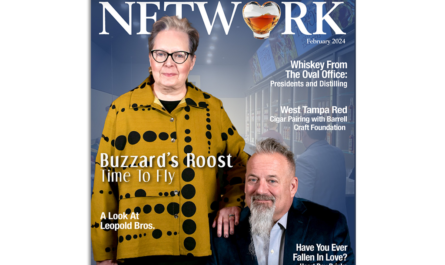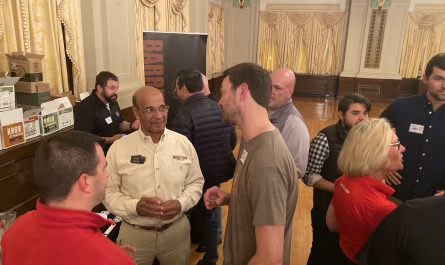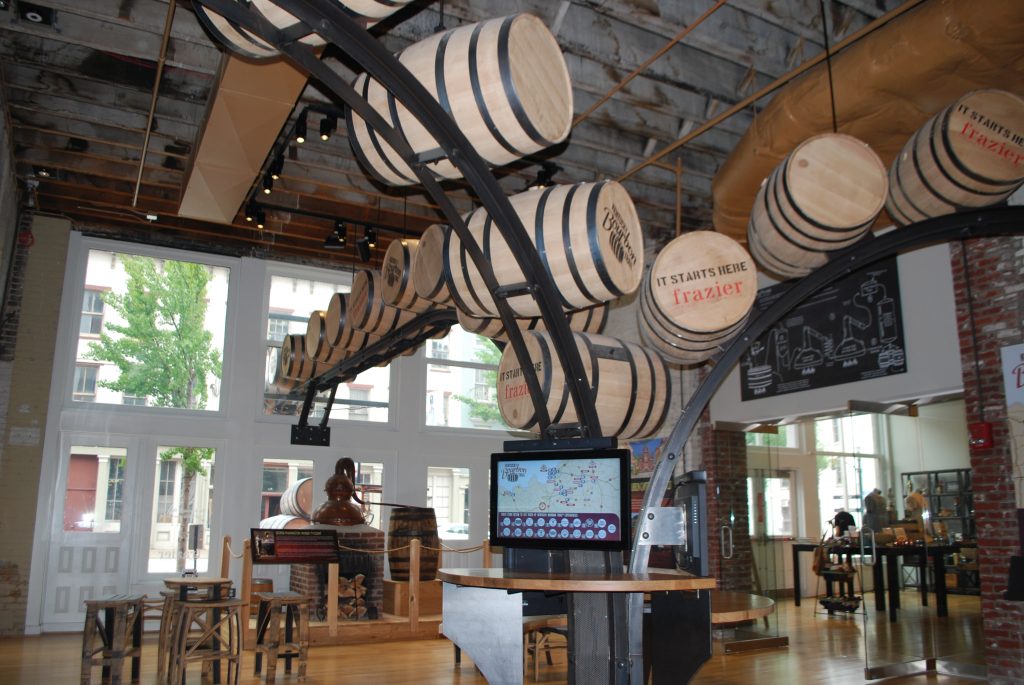
The King of Hearts told the White Rabbit to “begin at the beginning” in Alice’s Adventures in Wonderland. This is also sage advice for anyone about to start a new adventure along the Kentucky Bourbon Trail. And the best beginning is the Frazier Kentucky History Museum on Main Street (AKA Whiskey Row) in downtown Louisville, Kentucky.

The Frazier has even graciously agreed to “make it a double” for bourbon fans by hosting both the free Kentucky Bourbon Trail Welcome Center on the first floor and the engaging TheSpirit of Kentucky exhibition as part of the paid museum tour on the third floor. Both will help you understand why the Bluegrass state is home to most of the bourbon distilleries in the world, before you set off to see them for yourself.
First, a word about the Kentucky Bourbon Trail (KBT): It’s a marketing effort by the Kentucky Distillers Associationto promote America’s official native spirit being made at 16 distilleries around Kentucky, primarily around the Louisville, Bardstown, and the Frankfort/Lawrenceberg areas.
The KDA also sponsors the Kentucky Bourbon Trail Craft Tourfeaturing 20 smaller, artisanal distilleries in four regions around the state. (Note: Not every bourbon distillery in Kentucky participates in the Kentucky Bourbon Trail consortium, but many have visitors’ centers you can tour.)

Outside the Frazier Museum, after walking past a Prohibition-era Ford truck full of bourbon barrels festooned with the message “It Starts Here,” you enter the beautiful exposed brick and hardwood floors of the official KBT Welcome Center. Bourbon barrels ride the same tracks overhead that they do from the distillery to the trucks and warehouses (called rickhouses or rackhouses) all around the state.
A bourbon concierge stands ready at the main desk to help visitors plan a day (or two or three) out on the trail. Or use one of several large touchscreen monitors to call up information and video about each of the distilleries that make up the KBT.
The exhibits include a large copper pot still as part of an exhibit on George Washington and his whiskey-making ventures, along with a number of other displays and artifacts to educate visitors on Kentucky’s favorite spirit.
Don’t miss the Museum Store as you explore, just off the Welcome Center. It’s brim-full of an eclectic collection of historical, uniquely Kentucky, and bourbon-related souvenirs and gifts that range from t-shirts (“Bourbon is a Vegetable” and “Call Me Old-Fashioned”) to recipe books to bourbon posters and prints. It’s a great place to shop for yourself or out-of-town guests. And, yes, you can also buy more than 80 different Kentucky bourbons by the bottle here.
Be sure to allow time to visit the permanent The Spirit of Kentucky exhibition on the museum’s third floor. Admissions prices range from $14 for adults to $12 for seniors and military to $10/free for children depending on age. This admission is valid for the entire museum for the day (which is good because there is so much here to see and learn).
In addition, you can do a Daily Distillery Tour by motorcoach that leaves the Frazier History Museum each day of the week at 1:00 p.m. and visits one of six different distilleries. The $75 per person ticket includes admission to the Frazier, round-trip luxury transportation, a guided distillery tour, a tasting, and light refreshments.

You enter The Spirit of Kentucky exhibition through a covered bridge with high-resolution video on one side of the spectacular Cumberland Falls or My Old Kentucky Home in Bardstown, and Red River Gorge on the other. Then walk between hand-stacked limestone farm fences on rough oak flooring as you learn the special reasons that Kentucky is home to more barrels of bourbon than people.
The theme of the first of three main rooms is “Enchanted” and explains the role that Kentucky’s natural resources play in the bourbon making process. The sweet tasting limestone-rich water takes the iron out and puts mineral in bourbon.

Crops and grain from corn, rye, and malted barley to wheat are used in differing recipes (called the mash bill) to give each bourbon a unique flavor. The wood section offers a hands-on look at how white oak trees become charred barrels to add even more flavor to bourbon.
Things really get interesting as you enter the “Gracious” room, an authentic period living and dining room with a fireplace and lined with portraits of some of the giants of the bourbon industry. Leave plenty of time to explore at the “Gracious Table” where you can access, with an easy touch of your fingertips, a digital library of photos, maps, video interviews, and vintage advertising on the history of bourbon from early settlers through Prohibition to today’s bourbon renaissance.

Next, step through a copper entryway into the “Refined” room to trace the evolution of the still and see a collection of vintage and collectible bottles of bourbon dating back many decades.
Finally, exit the exhibition through the “Bottle Hall,” an eye-popping collection of every different brand of bourbon currently being distilled and bottled in Kentucky: more than 500 different bottles. Don’t forget to get a photo to impress your friends. (If you want to act like it’s your personal collection, that’s up to you.)

No, those 500 bottles are not for sale. But be sure to stop back by the Museum Store on your way out to add to your personal bottle hall.
Before you go, finish your visit with a stroll through a temporary exhibit called “Woodford Reserve and the Kentucky Derby: Two Decades of Artistry, Bourbon, and Horse Racing.” This distillery has sold special bottles honoring the last 20 Kentucky Derby horse races. The display offers a chance to see both the original art and the commemorative bottles of Woodford Reserve. (This exhibition runs through January 2020.)
Once you spend some time at the Frazier History Museum, you’ll be a true Kentucky bourbon expert. Then get out there and hit the trail.
Accessible Travel Note: The Frazier History Museum is completely accessible for wheelchair and mobility scooter users.

By Brian G. Miller
